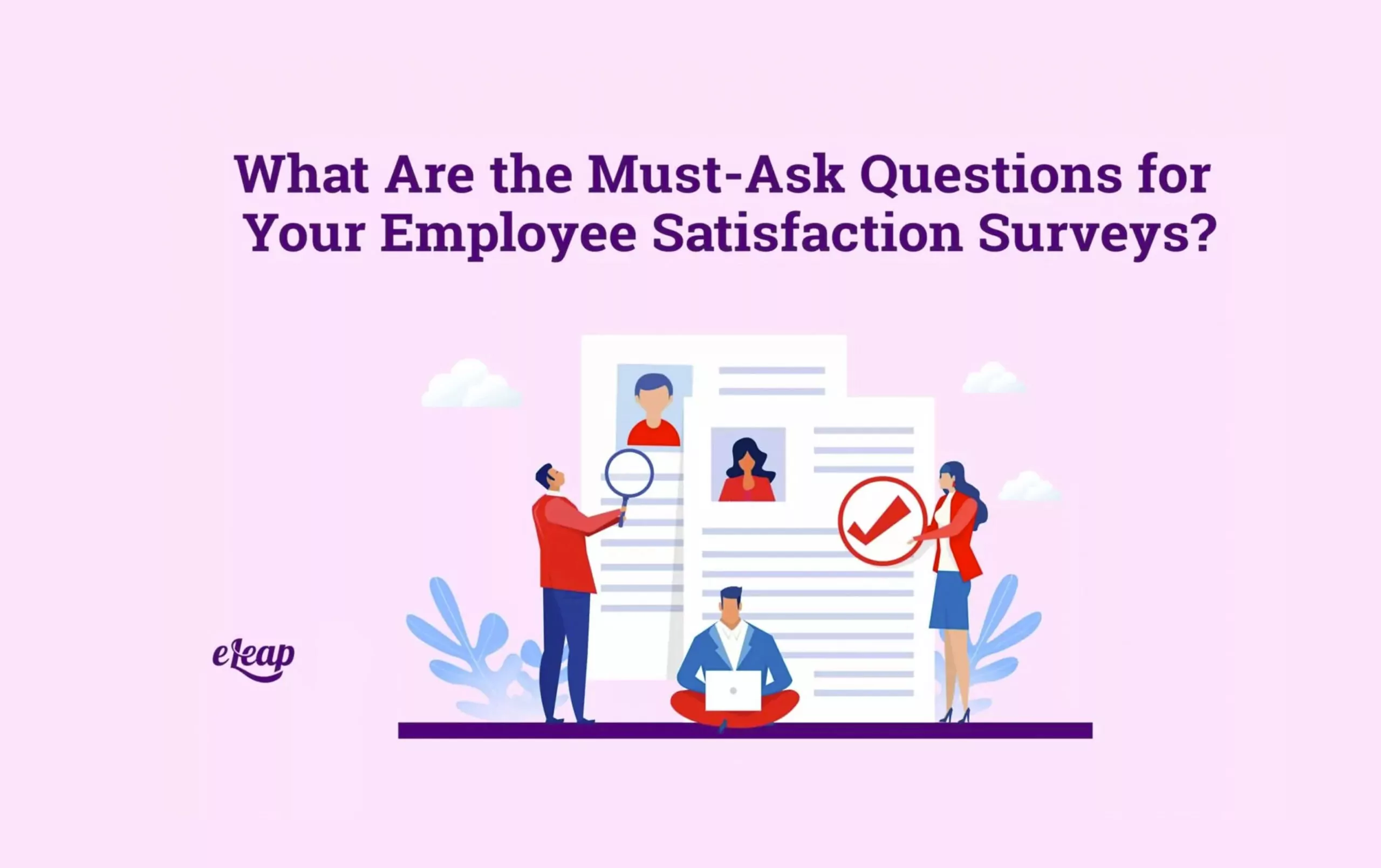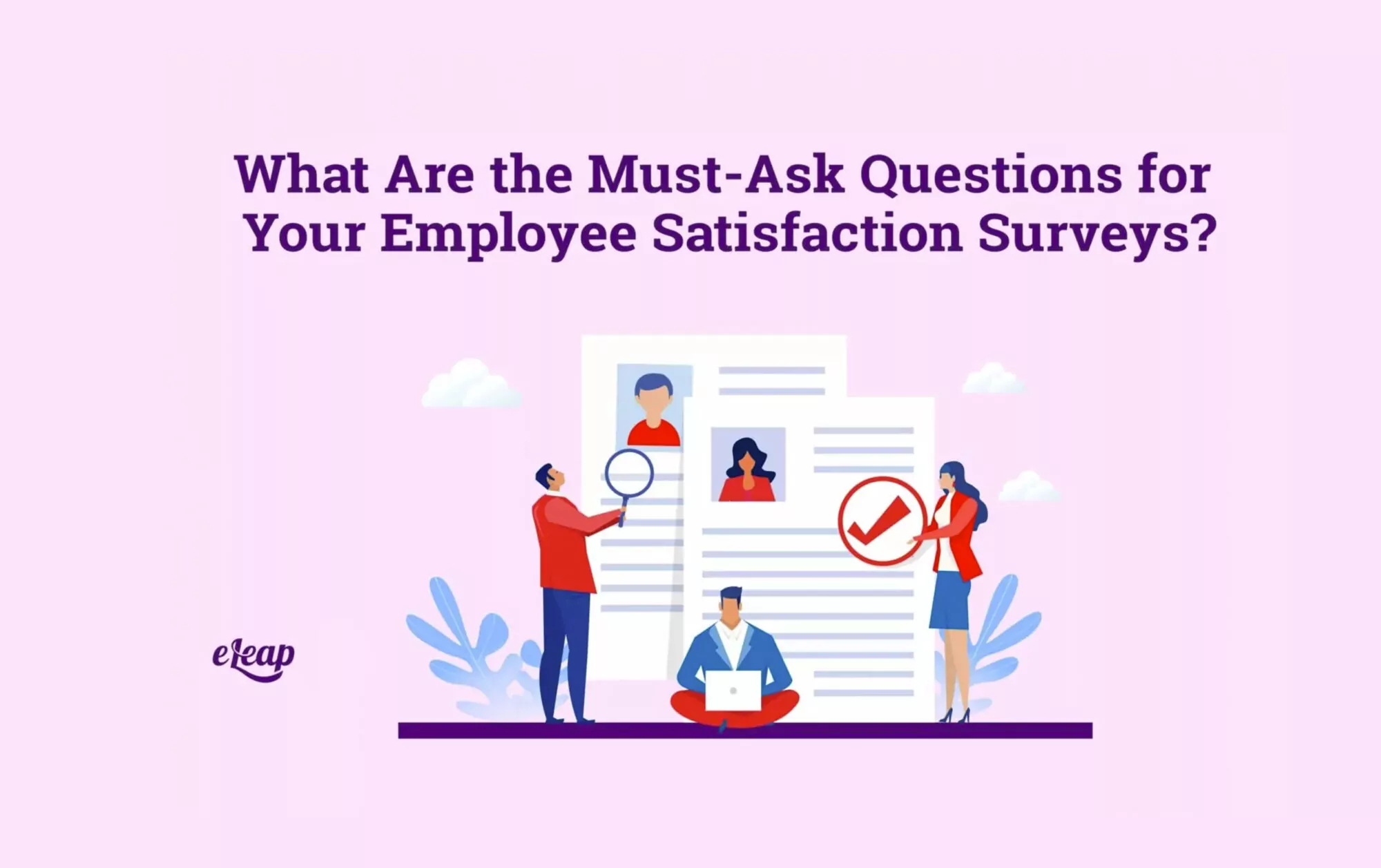What Are the Must-Ask Questions for Your Employee Satisfaction Surveys?

Employee satisfaction surveys have always been an excellent way to find out how a company is operating through the eyes of its workers. With an uptick in remote and hybrid work environments, these surveys are more important than ever. It’s hard to gauge how satisfied workers are when management and other leaders don’t see them regularly.

Before the pandemic, workers were close together in a shared space, which made it easier to feel connected to a business and its mission. It also gave more insight into how a certain role could impact the success of the company overall. With hybrid and distributed workplaces becoming common, recapturing that same feeling is challenging, something that can harm the satisfaction of employees.
The year 2020 showed us that 100% engagement may not be possible. While you might send out annual surveys on the engagement of employees, employee satisfaction surveys are just as essential. These act as an integral HR metric to determine when employees are becoming unhappy. Knowing this lets, you delve into solutions to resolve the issue.
When creating employee satisfaction surveys, the questions used are the most important factor in the process. To help you ensure you build the best surveys about employee satisfaction, we’ve provided some sample questions and information about why employee satisfaction surveys matter.
What’s the Difference Between Employee Satisfaction and Employee Engagement?
Many people use the terms “employee satisfaction” and “employee engagement” as one and the same. However, these are two terms that refer to very different things.
Employee satisfaction refers to a worker who is happy with their pay, benefits, and overall job. These people will show up for work and do it well, but you may not see them after hours or volunteering to head new initiatives.
Employee engagement looks at how much a worker loves a job. When an employee is engaged, they’re passionate, motivated, productive, and willing to push further to ensure the business succeeds.
Employee satisfaction looks at whether someone likes their job, whether engaged with it or not. These people are happy with the pay and benefits but not much more. Engaged employees can be more useful, but you still need to ensure satisfied employees have their needs met. The right tools and support might make them more engaged.
Reasons to Prioritize Employee Satisfaction
For the human resources department, it’s essential to find out if you have employees who feel satisfied but could be better engaged. Learning what is causing less engagement on the job – such as poor work-life balance, lack of recognition, or ineffective management – lets you take steps to improve the experience and retain your workers.
The best thing you can hope for is to create a working environment in which each worker feels recognized, valued, heard, and seen. This is the ultimate way to boost employee engagement. When engagement goes up, your company can see an array of benefits.
When employees are highly engaged and invest in what they do, they’re more likely to consider ways to positively contribute to the business, which can improve revenue. All these things can increase retention rates and lead to a better quality of work, more innovation, and higher productivity.
A second reason to consider employee satisfaction is that low satisfaction could mean that employees are more likely to move to other companies to work. Employees who are happy with the work they are doing are going to be likely to stay, so you can reap the benefits of higher retention of employees.
Employee satisfaction is the bedrock for employee engagement. When employees come into the office and enjoy their jobs, building on satisfaction helps achieve top engagement levels. Paying attention to levels of employee satisfaction can help you move toward better engagement and all the positives it offers.
An employee satisfaction survey helps you learn why satisfied team members aren’t as engaged as you’d like. This lets you work on the employee experience so you can ensure every worker has the potential for a fulfilling career at your business.
What Things Can Be Measured Using Employee Satisfaction Surveys?
Implementing employee satisfaction surveys lets you gain quantitative and qualitative information about the experience employees have at your company. These surveys allow you to be more proactive, finding opportunities and fixing problems before they can grow and become more serious.
When you use these surveys, they can measure the satisfaction of employees at three distinct levels: organizational, interpersonal, and individual.
Organizational
One of the things you want to know is how the company as a whole has an impact on the satisfaction of employees. For instance, are they connected with your culture? Are you offering benefits they appreciate? Do they generally feel as if they can grow at the company? Making organizational changes can be complicated and take time, but it often has the largest reward.
The feedback from employee satisfaction surveys lets you learn more about the concerns of workers. With this information in hand, you can ensure everyone is enjoying their time at work.
Interpersonal
Many people have heard the saying, “Employees don’t leave companies, they leave managers.” That’s something important to consider. Some of the questions on employee satisfaction surveys should revolve around managerial support, communication, and involvement. This lets you know if employees are held back from maximum engagement due to poor management.
Beyond management questions, it’s also important to ask about team dynamics. With many employees working from home or over locations, it can be easy to feel alone and cut off from members of a team. Questions about inclusivity, communication, employee recognition, respect, and team relationships can give you additional information about how employees are feeling.
Individual
The main goal of employee satisfaction surveys is to learn whether each employee enjoys working for your business. The most general thing you want to find out is if an employee is happy with their job. If they feel underappreciated, stuck, underpaid, overworked, or understimulated, it can make them feel disengaged. This might lead to looking for a career that offers more fulfillment.
Add in questions specifically about the role to see whether an employee finds their job enjoyable or if they feel there is a lot that could be improved.
As you consider these categories, be aware that not all employee satisfaction surveys need to include all three question types. Consider the unique needs of your business and what will lead to the best decisions moving into the future.
The Top Questions for Employee Satisfaction Surveys
When you’re ready to send out employee satisfaction surveys, the right questions are essential. You want to include a variety of different questions, such as Likert scale or rating scale questions, to get quantitative answers as well as open-ended questions to get additional employee feedback.
Likert scale questions let workers choose how much they agree or disagree with a question on a scale ranging from “strongly agree” to “strongly disagree.” Rating scale questions will have employees choose a number from one to 10 (or something similar) to represent how they feel.
In the sample questions for employee satisfaction surveys below, we’ll share all of these types of questions. Use these to gain inspiration so you can create the best employee satisfaction surveys for your specific company.
Organizational Questions
- How much satisfaction do you feel from working at our company?
- If there was one thing you could change about the company, what would you choose and why?
- Is our company one you would recommend to family and friends? Why or why not?
- How likely is it for you to search for jobs outside of the organization?
- How much does it seem this company is open to change?
Interpersonal Questions
- To what degree do you think your peers value your thoughts and opinions?
- How much do you feel your manager cares about your opinions?
- Do you get support from your manager when it is needed?
- How often do you feel recognized for your work?
- How often does a manager put time and effort into your professional growth?
Role-Based Questions
- How would you rate your satisfaction with work-life balance on a scale of one to five?
- Is your work something you find meaningful?
- Do you believe the company is allowing you to grow on a professional level?
- Do you think the role you are in uses your skills as much as possible?
- Does it feel as if you’re given good compensation for what you do?
Adding at least one open-ended question is ideal for employee satisfaction surveys. This provides an avenue for workers to share any extra feedback that the provided questions might not cover.
Many experts find that qualitative open-ended inquiries provide more useful information than simple ratings or rankings. When there is space to elaborate on their feelings, employees may share beyond what the survey directs them to.
In Conclusion
Employee satisfaction surveys are one of many tools that should be used regularly to get an idea of how things are going within a company. However, make sure you have all your tools ready. Employee onboarding, engagement, diversity and inclusion, and exit interviews are other ways to ensure you know what is needed to create a fantastic workplace. Just be sure you space things out, so surveys don’t overwhelm employees. The eLeaP continuous performance management system provides organizations with powerful options to attract and retain high caliber team members.